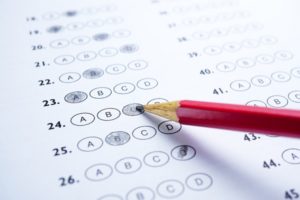
Secondary School Admission Test(SSAT) is widely used for entering many prestigious private schools such as Winsor, Commonwealth School, and Phillips Academy. Although it is not required for admission this year due to the pandemic, only students who have completed seventh and eighth grade and show they are academically qualified through a high score on the SSAT will be accepted to these schools. Taking the SSAT even though it is not required will separate you from all the other qualified candidates who don’t take the exam. The most noticeable difference between SSAT and ISEE is that the sections in SSAT test students heavily on verbal reasoning, which requires a more structured learning processes and practice provided by teachers and other resources.
It’s common that even the best students find the SSAT challenging. If your child’s goal is to get into a prestigious private school, making sure they have mastered both the verbal and mathematics sections is essential when competing with other candidates. Enroll your child now in ASC A+ Program to ensure they get the support from the best teachers who have been helping students reach top percentiles on SSAT for over 27 years. Follow the free recommended tips to prepare SSAT below:
One of the most important elements of scoring high on standardized tests is being familiar and comfortable with its format. Start with the facts about the first section of the test, Quantitative 1:
SSAT courses offer a focussed environment that will make sure there are no surprises on test day. Experienced teachers will improve students’ understanding of what the section is meant to assess, how long they should spend on each question, and how to study for the SSAT.

Quantitative reasoning can be intimidating, but courses will have students smiling
Unlike ISEE(link to the ISEE post), which has two general categories of questions in Quantitative Reasoning. SSAT test Quantitative 1 only has one category: Word Problems. Students will be expected to be tested with their skills in three mathematical areas: computations, geometry/algebra, and mathematical concepts. After students have been introduced to the question types, the next step is practice.
SSAT training will help create conditions that are similar to test conditions and give students hands-on practice completing the exam, followed by immediate feedback about how to improve. The courses will challenge and encourage students to do their best with every round of practice.

Myths like choosing C if you don’t know the answer are dispelled when students have real strategies
Along with allowing students to practice and build confidence for the SSAT, the A+ Program prep courses will also provide specific strategies and methods to improve efficiency. For example, don’t waste too much time on a question that is difficult for you because the SSAT test will only take a 0.25 deduction for each incorrect answer. This is just one strategy among many that the ASC A+ Program will provide to help your child do well in the Quantitative Reasoning section and beyond.
Get the best support for your child by enrolling in A+ SSAT exam prep